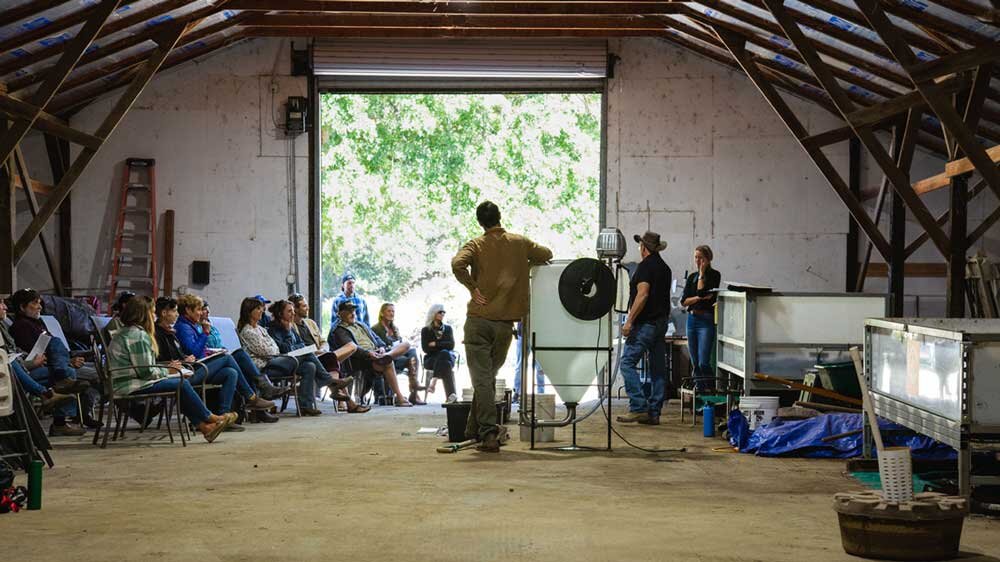The Worms That Make up the Gaviota SOIL Program
Every time I walk the rich land in Santa Barbara and Ventura Counties, along streams and through grasslands, I take time to observe and note patterns – things that bring order to a seemingly chaotic natural world. It’s a habit that I picked up through my work in restorative agriculture. One of the basic principles in this work – based on indigenous land stewardship traditions – is to seek out and mimic the processes we witness in living ecosystems, where each component plays a role to keep the whole healthy.
For several years, I’ve been studying one particular process in depth: composting. This natural decomposition of organic material is nature’s way of recycling and feeding back into the earth. It also happens to hold huge possibilities for combatting the climate crisis, helping speed the process of pulling excess carbon from the air, where it is hurting us, and storing it back in the soil, where it helps us.
Beginning in 2019, Wild Farmlands Foundation, Santa Barbara Blueberries, Gaviota Coast Conservancy, and Community Environmental Council started partnering on a project called Gaviota SOIL (Saving Organics and Investing in Land). Through this project, our team tests community-based vermicomposting (worm composting). Our goal is to build soil health, recapture wasted food, and advance a healthy and localized food system. The vermicomposting system, housed at Santa Barbara Blueberries on Restoration Oaks Ranch, uses red wiggler worms to turn food waste into an organic, nutrient-dense soil amendment. Ed Seaman, manager of the project and Restoration Oaks Ranch, is enthusiastic about the benefits of using this natural fertilizer to replace synthetic fertilizers that are the industry norm, something he discusses in our recent video about the project (see below).
More than just benefitting the blueberry farm, this project serves as a platform for research, community engagement and policy advocacy. Over the last year, we engaged regulatory agencies, repurposed over 10,000 pounds of manure and food waste, and harvested and applied high-quality, locally sourced vermicompost at the ranch. From the beginning, the project team ensured this effort was scalable, legal and collaborative. It is now one of the first publicly-available, legal on-farm food waste vermicomposting systems in our region.
Now, we are gearing up to expand the capacity of the vermicompost system and share it with our region. Part of what will fuel this growth is our recent selection as a member of the statewide Community Composting for Green Spaces program. Run through CalRecycle and the California Alliance of Community Composters, the technical assistance program will connect our site with a network of land-based and community-driven composting projects throughout the state. With the climate crisis picking up steam, it has never been more critical to establish farms – especially small farms serving local communities – as powerhouses for soil building, carbon sequestration, water quality improvement, and food waste diversion. This work is a key to food system resilience and ecosystem restoration regionally and globally.
Additional Resources
To learn more about the Gaviota SOIL project and how you can support this effort, watch our video below or contact CEC here.
Interested in other ways CEC is working to pilot, test, and scale up agricultural practices for composting and carbon farming in Santa Barbara and Ventura Counties? Read more here.
Check out Ohio State University’s Carbon Management and Sequestration Center.
Read Soil as Carbon Storehouse: New Weapon in Climate Fight?
